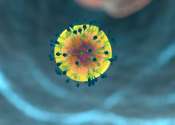Study finds the SARS-CoV-2 virus can infect the inner ear
Many COVID-19 patients have reported symptoms affecting the ears, including hearing loss and tinnitus. Dizziness and balance problems can also occur, suggesting that the SARS-CoV-2 virus may be able to infect the inner ear.
Oct 29, 2021
0
580








